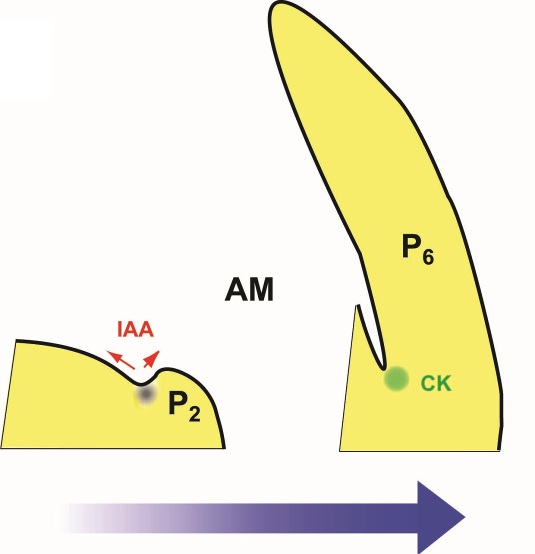Plants differ from most animals in their ability to initiate new cycles of growth and development, which rely on the establishment and activity of branch meristems harboring new stem cell niches. In seed plants, this is achieved by axillary meristems, which are established in the axil of each leaf base and develop into lateral branches.
In a recent study, researchers from JIAO Yuling’s group, at the Institute of Genetics and Developmental Biology, Chinese Academy of Sciences, together with colleagues from Caltech, described the initial processes of axillary meristem initiation in the model plant Arabidopsis thaliana. Using reporter gene expression analysis, it was found that axillary meristems initiate from leaf axil cells with low auxin through stereotypical stages of reporter gene expression analysis. Consistent with this, ectopic overproduction of auxin in the leaf axil efficiently inhibits axillary meristem initiation. Furthermore, their results demonstrated that auxin efflux is required for the leaf axil auxin minimum and axillary meristem initiation. After lowering of auxin levels, a subsequent cytokinin signaling pulse was observed prior to axillary meristem initiation. Their genetic analysis suggested that cytokinin perception and signaling are both required for axillary meristem initiation. This paper defines a mechanistic framework for understanding axillary meristem initiation.
As a key factor for plant architecture, the axillary meristem has profound impact influence on crop yield. The mechanistic framework underlying axillary meristem initiation presented in this study is expected to be conserved across flowering plants, and may be useful as a conceptual framework to assist breeding practice.
This work has been online published on the Plant Cell (DOI: 10.1105/tpc.114.123083), with postdoctoral fellow WANG Ying as the first author. The Plant Cell also published an In Brief article commenting on the importance of this research as well as a related paper (DOI: 10.1105/tpc.114.127860). This research was supported by National Basic Research Program of China, National Natural Science Foundation of China, and the Chinese Academy of Sciences.

Figure. Conceptual Summary of Hormonal Regulation of AM Initiation (Image by IGDB)



